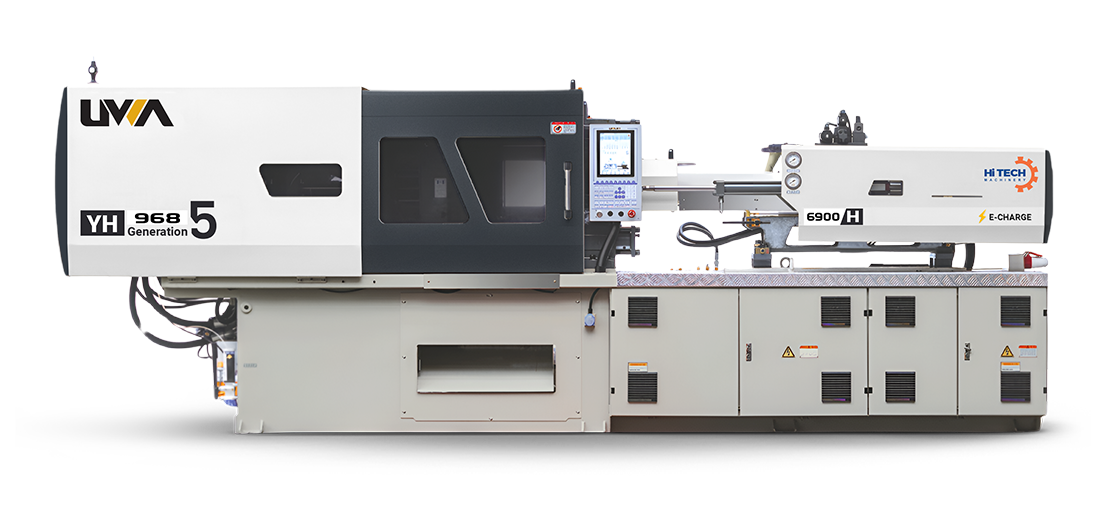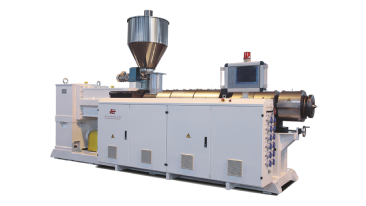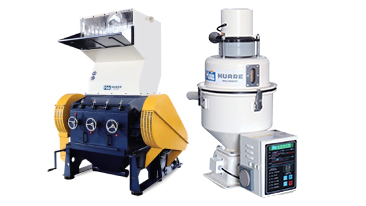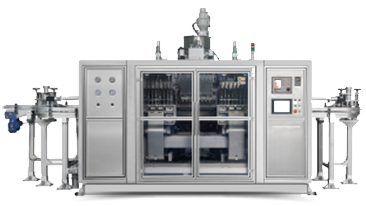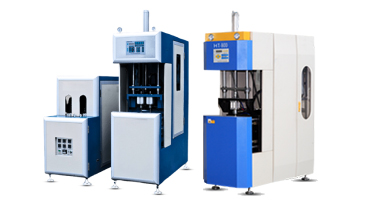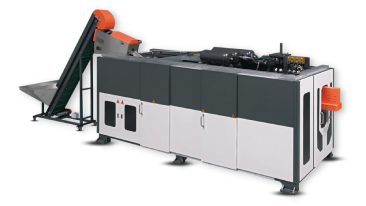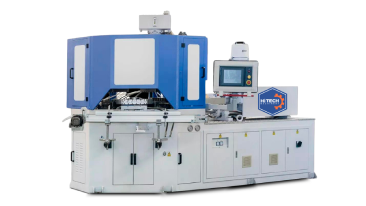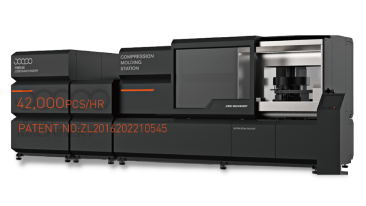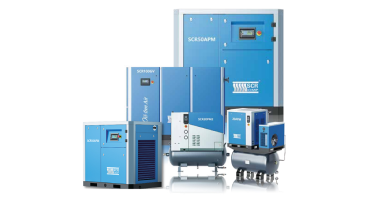The plastic market is filled with product opportunities, and one of the most promising markets for business investors is household products, a sector that still has plenty of demand and room to grow.
But what products would be most suitable? That depends on market research, profitability, and ease of manufacturing. Fortunately, we have already researched that for you.
This blog presents the top household items to manufacture, their possible production setups, and how HiTech Machinery supports you throughout the manufacturing journey.
Market Size of Plastic Household Items
According to DHR, the plastic household market stood at around $80 billion in 2024 and is expected to reach $125.8 billion by 2033. The report included kitchenware, storage containers, cleaning tools, and bathroom accessories primarily.
In local markets, the market is undocumented; few local brands exist, but consumers are more reliant on affordability and quality of the product for their decision. A rough estimate for the plastic household market in Pakistan is about 947 million, as shared by data in the Index report.
What Items to Manufacture and Why?
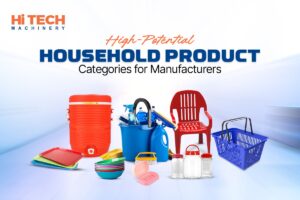
The plastic market is full of product possibilities. However, when we focus on items that equally benefit both the user and the investor, the list narrows down.
Based on our market research and inquiry data, the following plastic products are among the most promising options for initial manufacturing.
Food Storage Containers
Market research shows that this category holds the largest share in the household segment. It includes both disposable thin-wall containers as well as sturdy jars, baskets, and boxes. The range is wide, and demand remains consistently strong.
Plastic Crockery
An item category with plenty of options to explore: plates, bowls, trays, spoons, and other kitchen utensils. You can start with a single product and expand as you scale. This segment has high demand and a large user base in both domestic and commercial (especially hospitality) sectors.
Bathroom Accessories
This segment covers both large and small items, from tubs and buckets to soap dishes and bath mugs. These are everyday essentials in every household, which keep demand steady throughout the year.
Drinkware (Domestic Focus)
A range of impulse-buy products, such as water bottles, jugs, and coolers. Buyers, especially homemakers, consider aesthetics and ease of cleaning when choosing these items. Exploring design variations in this range can help you earn higher margins.
Plastic Furniture
Chairs are among the most common and profitable items to target in this category, from small kids’ chairs to study chairs and household seating. There’s constant demand across all age groups and household types.
Also Read: How to Start a Plastic Bottle Cap Manufacturing Business?
What Machinery is Required to Start Product Manufacturing
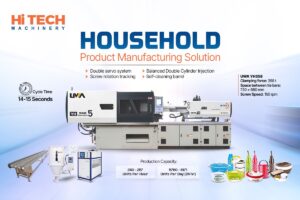
The production machinery may slightly vary depending on the product you choose to make. However, the core equipment remains largely the same. Here’s what you’ll need:
1. Injection Molding Machine
This is the heart of every plastic manufacturing setup, where the actual product takes shape. Injection molding machines are available in different tonnages, which you should select based on the size of the item you plan to produce. There are also two main types: hydraulic and all-electric. The all-electric variant is not only more energy-efficient but also recommended for food-grade products.
2. Mold
Mold design and cavity count vary greatly from product to product. For instance, you might use a single or twin-cavity mold for a kitchenware item, while smaller items like spoons often require multi-cavity molds for higher output.
3. Auxiliary Machinery
These are the support systems essential for efficient injection molding operations. Auxiliary machines include the material handling system (hopper dryer, autoloader) and the cooling system (mold temperature controller, chiller). In some setups, a robotic arm may also be used to eject and stack the molded parts automatically.
Cost Evaluation and Production Estimates
Production mainly depends on the machine’s cycle time, which varies from product to product. If we take reference from one of our installed projects on plastic trays, we can get an idea of the production scale.
| Product | Plastic Tray |
| Cycle time | 14–15 seconds |
| Hourly production | 240 – 257 units |
| Daily production (24h) | 5,760 – 6,171 units |
As for costs, there’s always some fluctuation since it mostly depends on the material type, its weight, and electricity usage. If you’re using a servo-based or all-electric system, the power cost further reduces.
Having said that, if you set up your supply chain properly and pick a variety of SKUs within the plastic category, you can easily achieve ROI within two years, and some of our clients have done it even earlier.
Why Choose HiTech Machinery?
HiTech Machinery helps you set up your complete household product manufacturing business — all under one roof. Share your product requirements, and our R&D team will prepare a customized proposal based on your budget, product, and production goals.
Beyond setup and installation, we continue to support you with:
- After-sales Service
- Local Warranty
- Spare Parts Availability
Reach out to us and get more insights on how you can begin your product journey.

